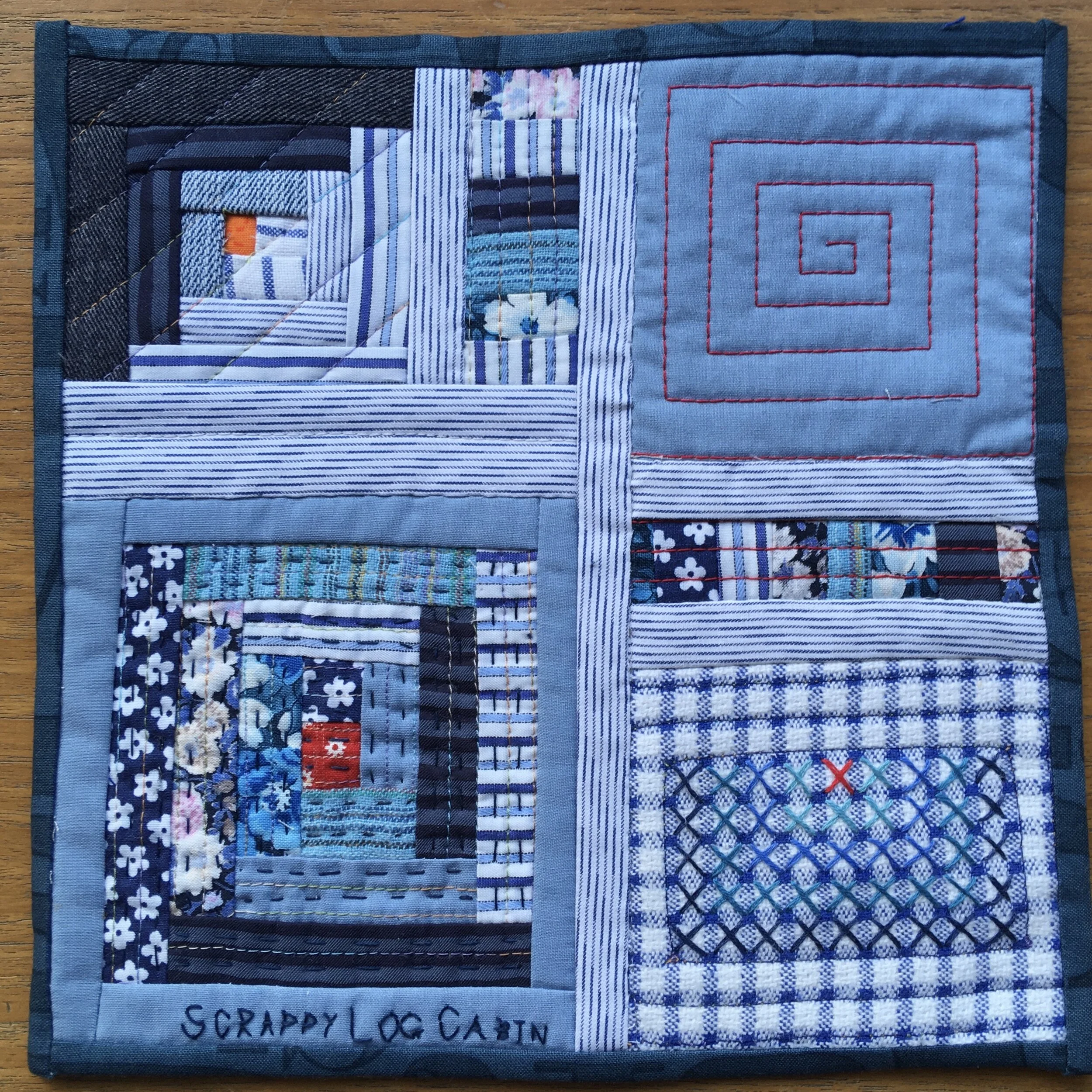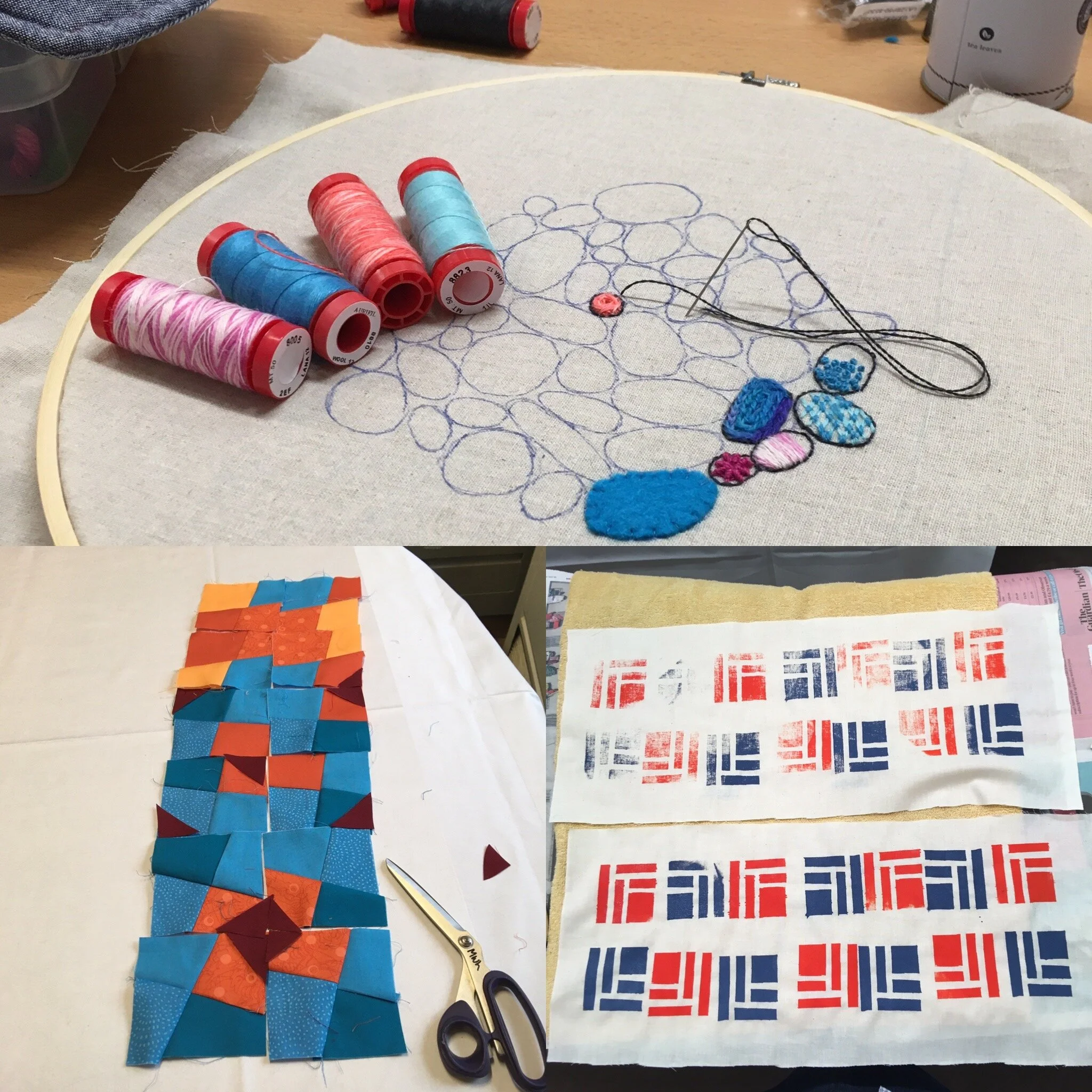Journal Quilts 1
“Journal Quilts can provide a great opportunity to try out new ideas, techniques, products and materials – and make a good excuse to experiment and have some fun without committing to a huge project. You can, if you wish, make them seasonal or a record of ‘your year’ in some way, but there is no obligation to do this. The choice of subject or theme, and how the quilts relate to each other, is entirely up to you.”
Contemporary Quilt , The Quilters’ Guild
I have recently joined the Contemporary Quilt Group (CQ) and decided that this Journal Quilt Challenge was what I needed to bring some focus to all the different ideas and techniques I have been encountering as I journey deeper into the quilting community.
Each year CQ add an additional requirement, which helps to focus the mind and provide challenge. For 2020 the requirement is:
Each JQ should include at least one element – fabric or other material – that has had ‘a former life’ in some way. When you submit your quilt, we would like you to tell us which bit of the quilt this applies to, and what it used to be. It could be, for example, a pocket from a pair of jeans that no longer fit, a fragment of a family wedding dress or a small piece of the curtains that clashed with the new de?cor. Or you could choose to include plastic from drinks straws or carrier bags, paper from magazines or catalogues, even metal from drinks cans or food packaging.
Each JQ should relate in some way to your chosen subject or theme.
Each JQ should be 9” x 9” square.
As I’m still relatively new to patchwork and quilting and am discovering new things to try all the time and I love repurposing fabric and other stuff my theme for the year is “something old, something new “. My intention is that as well as upcycling some fabric I will also put into practice some of the new techniques I have been learning.
For my January JQ, I used an old ‘butchers’ apron, green and white stripes in a cotton twill. I machine stitched pleats across the fabric and then hand stitched the pleats to give the lattice pattern. It was layered with batting scraps and calico upcycled from a toile from my attempt at dress-making (I’d rather be quilting).
Pinching pleats was one of many techniques I have learned from the classes in Helen Birmingham’s Stitchbook project . I didn’t sign up for the whole year but have dipped into the project by buying individual classes.
I have just completed my February JQ , this time starting with a couple of Log Cabin Blocks made in different ways. I used a variety of techniques to construct the whole block:
foundation piecing of a log cabin, not as accurately as it should be (the block with the orange centre)
quilt-as-you-go (the red centred log cabin and the filler strips) as exemplified by Svetlana Sotak @sotakhandmade
hand quilting (as the back shows, I need lots of practice)
cross stitch on checked fabric
Stitch writing (more practice here too) - this style learned with Heather Chalkley at York School of Sewing (YSoS) though again, much more practice needed!
sashing and binding - also learned at YSoS
Upcycled materials in this project included denim jeans, mens shirts, a cotton dress, a cotton sheet, and a checked teatowel.
I have learned lots of lessons from doing this including:
Making a quilt to exact dimensions (9 inches square) is challenging
Allow plenty of excess in each block and don’t cut to the size you think it should be until you really have to (see 1 above)
Don’t use stripy fabric for sashing - it reveals the imperfections in cutting and stitching
It may not be March yet, but I am already thinking about what I might do for next month, watch this space ….















